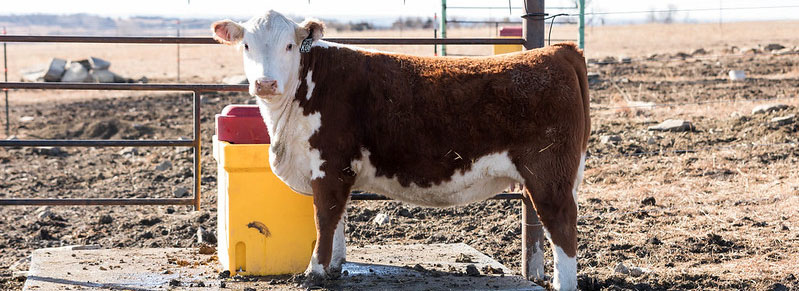Walk through the halls of a high school and it is easy to see that not all kids develop at the same pace – some look like mature adults while others appear younger than their age.
Similarly, individual animals in a cattle herd also reach maturity at different times, say the experts at Kansas State University’s Beef Cattle Institute.
Speaking on a recent Cattle Chat podcast, the experts addressed factors that influence the pace at which heifers reach their maturity.
“Most heifers reach puberty at 12-13 months of age; there are some Brahman-influenced breeds that are a little older when they begin cycling,” said K-State veterinarian Bob Larson.
To help producers identify the heifers that are most likely to get bred early in the breeding season, Larson advises that producers complete a pre-breeding evaluation of the heifers.
“The two things that drive maturity are their age and their body weight,” Larson said.
When Larson conducts the pre-breeding evaluation, he assesses their reproductive tract.
“As they get closer to puberty, their reproductive tract starts to feel more like an adult tract with a thicker, larger uterus and some follicle structures on the ovaries,” Larson said.
He said there are two main times these evaluations are done.
“Six weeks before the breeding season, I can get an idea of the likelihood they’ll be cycling at breeding, and I still have time to help that along with nutrition. The other time is when we are getting ready for a synchronization protocol and I can separate the ones that are not likely to get bred,” Larson said.
Another factor affecting development is the amount of body fat heifers are carrying, which can be controlled by the heifer’s diet. The experts agree that the easiest way to measure that is through weighing the heifers.
“As heifers grow, they start to deposit more fat in each pound of gain and less muscle. So when they get to about 60-65% of their mature weight, the hormones will signal to the body that it is time to ovulate,” said K-State beef cattle nutritionist Philip Lancaster.
If these are retained heifers, Larson said, often producers will know a target weight that their females in the herd start to cycle. While it varies among herds, for many he said that is about 850 pounds.
Six weeks before breeding, Lancaster said producers can evaluate the heifer’s body condition and adjust accordingly.
“We can safely increase their nutrition to get more energy in their diet to push them to gain 2-2.5 pounds per day. As long as we start 70-90 days before the breeding season, many of those heifers will reach puberty on time,” Lancaster said.



